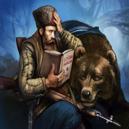Обоснована гипотеза, что цветная революция есть форма успешного городского партизанского восстания (герильи). Показано, что участники общественных движений – акторов цветных революций, обладают всеми критериями, предложенными К. Шмиттом для определения партизан. Показано, что участники «цветных» движений относятся к третьему типу партизан – гибридному. Политически и идейно они находятся под полным контролем стороннего суверена, не связанного с государством, в котором они действуют. По сути, герильяс цветной революции ведут партизанскую войну против суверена своей страны в интересах внешнего суверена. Указано, что «цветные» революции - первые успешные городские герильи.
TO THE THEORY OF THE PARTISAN CARL SCHMITTS: "COLOR" REVOLUTION, AS URBAN PARTISANS WARFARE (URBAN GUERRILLA)
Substantiates the hypothesis that "color" revolution – the essence of successful urban partisan rebellion (guerrilla). It is shown that participants of "color" social movements – active actors of "color" revolutions, possess all four criteria offered by C. Schmitt for distinction of partisan s from other participants of the armed political conflict. Thus, the participants of the "color" movements are one type of partisans in Shmitts sense. This is hybrid partisan. This type of partisans is characterized by the fact that in terms of political motivation, it is not independent. This Shmitts criterion of partisans are formed and controlled by a "third force," often do not associated with domestic political actors in states which conducted a partisan war. Purpose is the "third force" become targets of the partisans of this type. Indicates that "the color» revolutions, the first successful urban guerrilla.
 Ранний опыт государственного строительства большевиков и Конституция РСФСР 1918 года
Ранний опыт государственного строительства большевиков и Конституция РСФСР 1918 года
 7
7
 25308
|
Официальные извинения
25308
|
Официальные извинения
 972
972
 104941
|
Становление корпоративизма в современной России. Угрозы и возможности
104941
|
Становление корпоративизма в современной России. Угрозы и возможности
 239
239
 84518
84518


